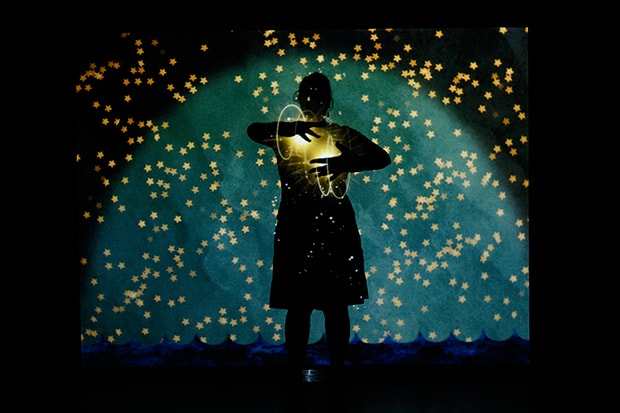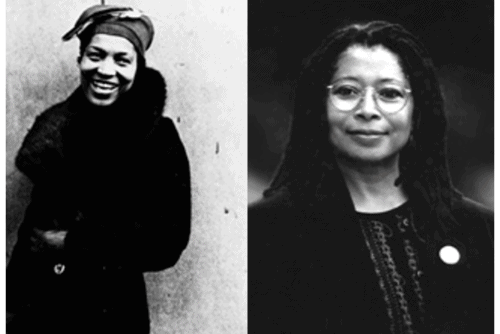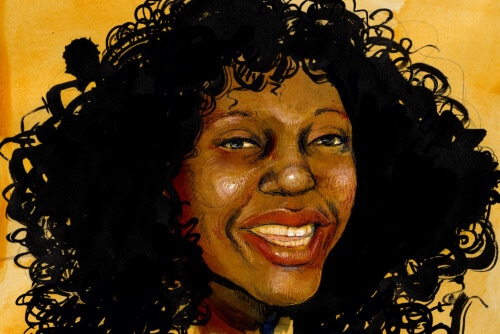“The dystopian past inhabits present practices, including the practice of medicine.”
– Dána-Ain Davis, Reproductive Injustice1
The medical profession transforms you. You learn protocols, expectations, a specific demeanor. You learn to relinquish your own personal quirks when approaching a patient. You hide behind a confident stride and a white coat. When discussing health and disease, you adopt an unwieldy language of precise terms whittled into acronyms, abbreviations, and eponyms. You learn to present patient history in alphabet speak.
You are empowered by the rigor and experience you develop. It is intense and rewarding, but it is also traumatic. You focus on impossible levels of efficiency, propagating fatigue and blunting your capacity for empathy. Under this level of duress, the veneer of niceties erodes. Resentment and bias percolate under the surface.
With time, you grow accustomed to an uncertainty that makes healing less a science and more an art. You develop instincts, premonitions, even superstitions. Things will happen, the consequences of which will jostle any sense of complacency you may have felt. You begin to approach patients with constant low levels of paranoia, especially in obstetrics, remembering all possible bad outcomes, close calls, patients who challenged you, patients who were harmed, patients who died. You learn that patients often feel unheard, learn to not trust their providers. These experiences kink your DNA as a medical specialist. They loom whenever you see someone new. In your practice, you worry that history is repeating itself. This could be a good or bad thing. Hopefully, the events that change you shake your faith in dogma, humble you, but they could produce a fear that eclipses your ability to help your patients through theirs.
As a board-certified high-risk pregnancy specialist, I have spent a greater part of my time in clinical practice trying to undo what I have learned and understand why healthcare often feels predatory. I found answers when I stepped away from the hospital campus and into the community.
Quite recently, the foundation of my medical training was challenged by people who staunchly and proudly work outside of the medical establishment, in particular birthing practitioners who recenter pregnancy care within the community. They have given me time and patience and, over many conversations, have helped me fracture my presumptions, dismantle my intentional and unintentional bias, and begin a difficult journey of decolonizing my medical practice. This journey has been consistently challenging and inspirational. It was because of one of these practitioners and leaders, Mama Hakima Payne, that I came to read Dána-Ain Davis’s Reproductive Injustice (NYU Press, 2019) and to see my perspective as a medical academic, clinician, and researcher shift and shatter.
Mama Hakima Payne is the CEO and co-founder of Uzazi Village, a nonprofit organization dedicated to improving perinatal outcomes for Black families in the Kansas City area. She holds a master’s in nursing education and is currently pursuing a PhD in Nursing Education. We met in 2017. We were both part of a panel discussion on a local radio show covering the ProPublica study on race and maternal mortality. I phoned in from my office; she spoke in-person at the station. Her voice was deliberate, deep, warm, even when discussing the policies hostile to the well-being of Black families. When we eventually met in person, she began educating me with astounding precision about how medical care and research was developed from a persistent tradition of dehumanizing and experimenting on Black mothers.
Mama Hakima quickly became my teacher, and over time, she became my friend. Now I often go to Uzazi Village to meet her. The organization is housed in an old, charming building a stone’s throw away from my own house in a neighborhood battling the specter of gentrification. Uzazi Village embodies the anti-racist, Afro-centric care models that Mama Hakima developed to support birth equity and Black families. Next to the small parking lot is a garden for an on-site apothecary and a fire pit where Mama Hakima often sits holding court during various celebrations. Inside there is a kitchen, rocking chairs, a diaper depot, and a clothing boutique. Further in, there is a prenatal clinic that focuses on culturally congruent care that centers on the village circle, an Afro-centric group prenatal care model that Mama Hakima developed. The facility is staffed with ENT services for tongue-tied infants, a team of doulas alongside a doula training program, lactation specialists, support groups, and classes for parents.
To this day, I am not sure how Mama Hakima makes the time for me. She is one busy lady, yet she carves out hours to have long, illuminating conversations, explaining her approach and programs that address birth equity. My spouse often knows when I come back from a long session at Uzazi. Often, I stare into space, distracted, still digesting what Mama Hakima had to say. During one of these visits, she gave me a copy of Reproductive Injustice. When she showed me the book, she said, “Read this. This book confirms what I have suspected and known for a long time.”
Reproductive Injustice evaluates Black infant prematurity within the context of history, relinquishing a traditional approach to evidentiary data by literally elevating the voices of affected Black families to speak the facts. Professor Davis’s voice is urgent, commanding, poetic, funny, and generous even while exposing the racism and injustices intrinsic to a healthcare system that prioritizes profit and efficiency. She describes the racism that drives Black infant prematurity and how it manifests through problematic initiatives, clinical myopia, the dangerous narrative of saving babies, and efforts to mitigate but not eradicate prematurity when it conflicts with growth of Neonatal Intensive Care Units. She asserts that the afterlife of slavery infects the medical vernacular and props up the patriarchal roots of medicalized obstetric practice. The book confirmed what I was already learning from Mama Hakima. I was part of a system that perpetuated a traumatic history in the present. I am part of the problem that I am trying to treat and manage.
I have been a physician since 2005. I recall as a resident learning about the Sims positions and using the Sims speculum. Back then, to me, Sims was just another eponym of some obscure medical pioneer, J. Marion Sims, often known as the father of gynecology. When I used his tools and methods, I had no idea that I was using the surgical technique or speculum that he designed by experimenting on Black enslaved women without anesthesia. What I had been taught as medical practice was bred from racism. His name and methods persist in the majority of clinical spaces without any exploration of how his racism and cruelty continue to inform our care models. Just as the police force evolved from slave-catching gangs and just as that past persists with police killings of innocent, unarmed Black civilians, the medical profession has a similar past. Our profession must understand its own past to understand why Black women and birthing people are dying in our care. In fact, as Reproductive Injustice explains, Black mothers are more likely to die from childbirth now than they were during slavery. Many of my colleagues agree that this is shameful. Many also vocally wonder why this is happening. I suggest they read Professor Davis’s book. Gradually, my colleagues are growing to understand this problematic legacy.
After finishing the book for the first time, I relitigated my own evolution through my medical education. I wanted to recover who I was and am from the medical professional constructs imposed on my identity while salvaging what was positive and productive about my cultivated, scientific expertise. I sought ways to obliterate the hierarchy between patient and provider and to restore humanity into my own practice. I did not want to work within a system that stripped agency, voice, and choice from Black families experiencing pregnancy and childbirth.
After Reproductive Injustice in 2019, Professor Davis published a seminal article describing a term that, as far as I know, had never been used in any medical publication: obstetric racism. Now, the term is used so regularly within the obstetric community in discussions of racial perinatal inequity that Professor Davis is at risk of the very erasure she has tried to undo for Black families. In the article, Professor Davis again used the voices of Black mothers to describe the violence and racism they experienced within the realm of medicalized obstetrics and to show how doulas and midwives offer necessary alternatives to mitigate or even avoid this trauma. The article, like the book, pulls apart what we consider the standard of care and exposes why current attempts to address racism within medicine fall short. As Davis writes with startling clarity, “One of the most important aspects of the afterlife of slavery is that racist intention is not necessary in the creation of racist outcomes.”2 When I read that line, I could imagine the puzzled looks among administrators who mandate hospital-wide anti-bias curricula, gasping, “What do you mean you don’t need racist intention to have racist outcomes?” The very idea, while true, is intimidating; tackling individual bias is insufficient in tackling medical racism. Every year, I am assigned an online module where I listen to pre-recorded slides explaining that I should not assume anything about anyone based on their appearance. Cynically I click through slides and quizzes. How seriously can I take this as a frequent recipient of racist assumptions, knowing that none of this has changed with anti-bias training? Microaggressions persist and compassion lags. Professor Davis asserts that this approach to undoing systemic racism barely addresses the real problem, but she also does not dismiss that internal, personal bias does play a role. “The repertoires of racism exist in the crevices and creases of a conversation, in the space between a comment and a pause,” she writes.3 However, in addition, the infrastructure by which we provide obstetric care and understand perinatal complications evolves from racism and sexism that runs deeper than a conversation. Even with good intentions, individuals in the medical establishment are participating in the afterlife of slavery, whether or not they realize it.
It has been four years since the book was published. I have read it about three times, each reading as visceral as the last. I also buy copies for all the high-risk pregnancy fellows in my department. Each year, when a new fellow starts, the book is in their welcome packet. I tell them, “This is not anything you will read in your textbook.” I explain how the book changed the way I approach clinical care, hoping they too will learn to recontextualize the patient-physician relationship in more fulfilling and less hierarchical ways. From my perspective, it should be mandatory, essential reading for the foreseeable future.
For the longest time, I did not understand how certain clinical paradigms were designed or determined to work. Why is prenatal care designed the way it is? Why must mothers wait for an overworked physician in a system that maximizes quantity over quality? Why do we schedule postpartum checks six weeks after delivery? Even now, my fellow neonatologists and perinatologists cannot agree on a good gestational cutoff to demarcate term pregnancies. Before Reproductive Injustice, I presumed a combination of careful investigation, accumulated expertise, and compassion formed our current models of care. It never occurred to me that the origins of these paradigms were problematic, dangerous, and oppressive. Or that they could change.
Consider the basis of every patient encounter. The standardized start of every clinical note is the chief complaint. Before speaking to a patient, we start the conversation here: “What brings you in today?” The problem is that the chief complaint, whether it is pain, preterm contractions, even stress, is the end-product of systemic racism. By revolving around the complaint, a patient history barely uncovers how a lifetime of experienced racism accumulates and manifests clinically. Instead, it creates a reductive, dehumanized patient identity and translates it into diagnoses without context. For many Black women and trans people, as Reproductive Injustice demonstrates, complaints are dismissed and diagnoses altogether missed. The story is familiar and consistent. It is told over and over again. I read it in the popular press and hear it from the community I serve. What can we do about it?
As an alternative, Professor Davis proposes prenatal care based in collective support and nurture. She describes group prenatal care that centers on conversations between families in which medical surveillance is part of the process but peripherally so. She also discusses the tremendous importance of doulas and midwives. Unlike practitioners like me, during initial prenatal visits, doulas may not talk about the pregnancy, at least not in medical terms. Instead, they focus on getting to know families, their values, and goals. According to Professor Davis, the intention is to “build friendship.”4
I can see why it works. Now, when I go off script during a clinical encounter, I get the most important information. Who is organizing the patient’s baby shower? Where do they plan to go to eat after their doctor’s appointment? What are their plans for the weekend? What days of the year are important to them? In one exceptional case, the rapport that I developed with a patient allowed me to enter a chain of shared, long-lasting obstetric support that set new boundaries. These shifts were made possible by Delia Pearl.5
Though I met Delia in the clinic and cared for her pregnancy as a medical provider, I hesitate to call her a patient because she always felt like an old friend. I remember when I first saw her: her smile, the shells in her hair. After I reviewed her ultrasounds and her vitals and assessed her obstetric complaints, we talked. We talked about everything: her family, her children, how she manages her home. At that time, Toni Morrison had just passed. I recalled to Delia how Beloved made me realize the power of fiction. She told me to watch the recently released documentary on Morrison’s life. Later, during another visit, she shared with me that she wanted to go back to the Continent and do some work there. I told her, in my experience, not to underestimate the powerful relief one feels when going back to ancestral lands, being surrounded by people who look like you, who understand your traditions and habits in ways you have never felt before. Later, she told me she wanted to be a doula or a midwife. I told her about my time at Uzazi Village. These conversations changed both of us and helped me become a better provider.
But official hospital policy encourages boundaries with patients. To a certain extent, this is understandable. Close relationships can cloud medical judgment and compromise care. However, as I experience changes wrought from lessons from Professor Davis, Mama Hakima, Delia, and others, I have begun to feel that such policies are more restrictive than protective. On top of that, clinical infrastructure inhibits any real opportunity to get to know a patient. The discourse is focused on risk, disease, and medical surveillance. Time between patients is tight and meaningful rapport in such circumstances is near impossible.
Against the odds, Delia and I managed to stay in each other’s lives. Through our relationship, we enact a care model fed from mutual respect, love, and equality. That is the radical revolution Professor Davis encourages, reframing care within a context of friendship. A patient’s history is more than prior surgery and smoking habits. It is their worldview, their daily life, their expectations for growing a family.
Delia did become a doula, and an incredible one. A few years later, a mother came to see me for obstetric care. She had recently moved to Kansas City and felt alone. She had a doula where she had previously lived but had not found one in her new home. I encouraged her to go to Uzazi Village and talk to Delia. When she was admitted for delivery, even though I was not managing this mother’s labor, Delia kept me updated through the night. The mother had no epidural and no Pitocin, just as she had wanted. In the morning, a child was born. Delia sent me a postpartum update and told me that the physician at delivery gave her high praise. I was not surprised. But I was overwhelmed. I was part of a shift, something bigger than myself, a greater, growing collective of support that prioritizes the power within each of us and challenges the established boundaries of what is possible.
After all, things have not always been this way. Change is not impossible.
Professor Davis ends her book on a note of love and hope. She explains how our personal and professional challenges open possibilities and create new perspectives that were otherwise unknown to us. She reclaims narratives lost to persistent erasure. She tears into fallible paradigms and finds opportunities for positive revolution, shifting power back to communities and reawakening an instinct to nurture. She dares her audience to reimagine prenatal, intrapartum, and postnatal care centered on Black families.
I know now that we cannot talk about eradicating poor perinatal outcomes without acknowledging how healthcare is part of an ugly legacy of slavery and its afterlives. Without the Black women in my life who have always expanded my view of what is possible, I could not have seen this reality or begun to find solutions. Change requires collective effort, which leads to collective transformations. My evolution has been personal, and I could not have done it alone. I need Delia. I need Mama Hakima. I need Professor Davis. I need my colleagues. But more importantly, I need my community. As Professor Davis says so beautifully in her acknowledgements, “Just know that you walk with me and I with you. Always.”6
WORKS CITED
Davis, Dána-Ain. “Obstetric Racism: The Racial Politics of Pregnancy, Labor, and Birthing.” Medical Anthropology 38, no. 7 (October 2019): 560-573.
___. Reproductive Injustice: Racism, Pregnancy, and Premature Birth. New York: NYU Press, 2019.
- Dána-Ain Davis, Reproductive Injustice, New York: New York University Press, 2019, 13. [↩]
- Dána-Ain Davis, “Obstetric Racism: The Racial Politics of Pregnancy, Labor, and Birthing,” Medical Anthropology 38, no. 7 (October 2019): 560-573. [↩]
- Dána-Ain Davis, Reproductive Injustice, New York: New York University Press, 2019, 203. [↩]
- Dána-Ain Davis, Reproductive Injustice, New York: New York University Press, 2019, 196. [↩]
- Delia Pearl’s name is used here with permission. She was a patient and is now a friend. Delia also speaks publicly about our relationship and what it means to her own work as a doula. [↩]
- Dána-Ain Davis, Reproductive Injustice, New York: New York University Press, 2019, 209. [↩]




